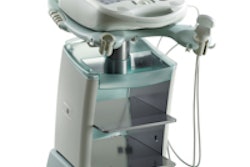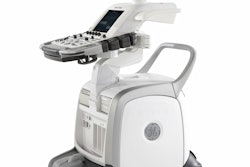Small, portable ultrasound units can play a valuable role in improving access to imaging technology in developing nations, according to research published in the December issue of the Journal of Ultrasound in Medicine.
"The challenges to effectively instituting this form of imaging will depend on proper training to ensure appropriate referral of patients who will clearly benefit from such imaging, adequately trained medical personnel to operate the equipment, interpret the images, and provide maintenance, and exploration of collaborative efforts with outside organizations or institutions that can assist with these training needs and financial requirements," wrote researchers from the VA Boston Healthcare System in Boston and the Hospital for Special Surgery in New York City.
In collaboration with the Ghana Health Mission in Sekondi-Takoradi, Ghana, the researchers explored the clinical utility of a portable ultrasound system in primary care and hospital settings in March 2004, involving a variety of physical conditions and multiple clinical scenarios (J Ultrasound Med, December 2008, Vol. 27:12, pp. 1735-1743).
The ultrasound exams were performed at two primary care sites and two hospitals by a radiologist experienced in general abdominal ultrasound, obstetric ultrasound, small parts and musculoskeletal ultrasound, and ultrasound-guided procedures. A Logiq Book (GE Healthcare, Chalfont St. Giles, U.K.) portable ultrasound machine equipped with linear (L5-10 MHz) and curved linear (C3-5 MHz) phased array transducers was utilized.
At an initial meeting, the radiologist reviewed examples of appropriate cases to refer for ultrasound evaluation with the medical team comprising physicians, nurse practitioners, and a group of nurses and nursing students. The patients were then scheduled for 30-minute ultrasound examinations at the end of each clinic visit during the weekday or on a weekend day reserved for scanning.
Exams performed at a rural village site were performed in conjunction with the patients' visits, and a radiologist report was provided promptly to the referring physician, according to the authors. The ultrasound studies were mostly musculoskeletal exams, with the rest being obstetric, pelvic, breast, vascular, abdominal, and genitourinary procedures.
"The large number of musculoskeletal cases reflects the prevalence of these problems in the population seen and the expertise of the sonographer," the authors wrote.
Musculoskeletal ultrasound contributed 16 (46%) of the exams performed in clinic settings, while 10 (29%) were a combination of abdominal, pelvic, and genitourinary exams. In hospital settings, abdominal, pelvic, and genitourinary ultrasound examinations combined for 18 studies (56%), and thirteen (41%) musculoskeletal studies were performed.
Of the 67 total ultrasound examinations performed, 54 (81%) showed abnormal findings, with the highest incidence of normal ultrasound findings occurring in obstetric and breast cases, according to the authors. Fifty-four (81%) were considered to add to the clinical diagnosis, while 27 (40%) influenced medical care for the patients, the researchers said.
"The large percentage of abnormal findings is striking and probably confirms that patients generally wait for extended periods before seeking medical care, until diseases have progressed, and they tend not to seek medical care unless they think that a medical problem is serious," the researchers wrote.
The authors noted that the economic limitations often mean that the cost of a small, portable ultrasound machine remains out of reach for developing countries. However, the systems are less expensive than CT or MR scanners, and vendors have been encouraged through organizations such as the Society of Radiologists in Ultrasound (SRU) and American Institute of Ultrasound in Medicine (AIUM), as well as the World Congress of Ultrasound, to consider donating used equipment for these settings, according to the authors.
By Erik L. Ridley
AuntMinnie.com staff writer
November 21, 2008
Related Reading
Ultrasound scan protocols for nonmedical personnel offer value, April 29, 2008
'Telemedicine' links Africans to Indian expertise, April 3, 2008
Handheld ultrasound performs well in ob/gyn applications, March 14, 2008
Frost forecasts African US market growth, February 6, 2008
Developing world has healthcare worker shortage, April 3, 2007
Copyright © 2008 AuntMinnie.com



















